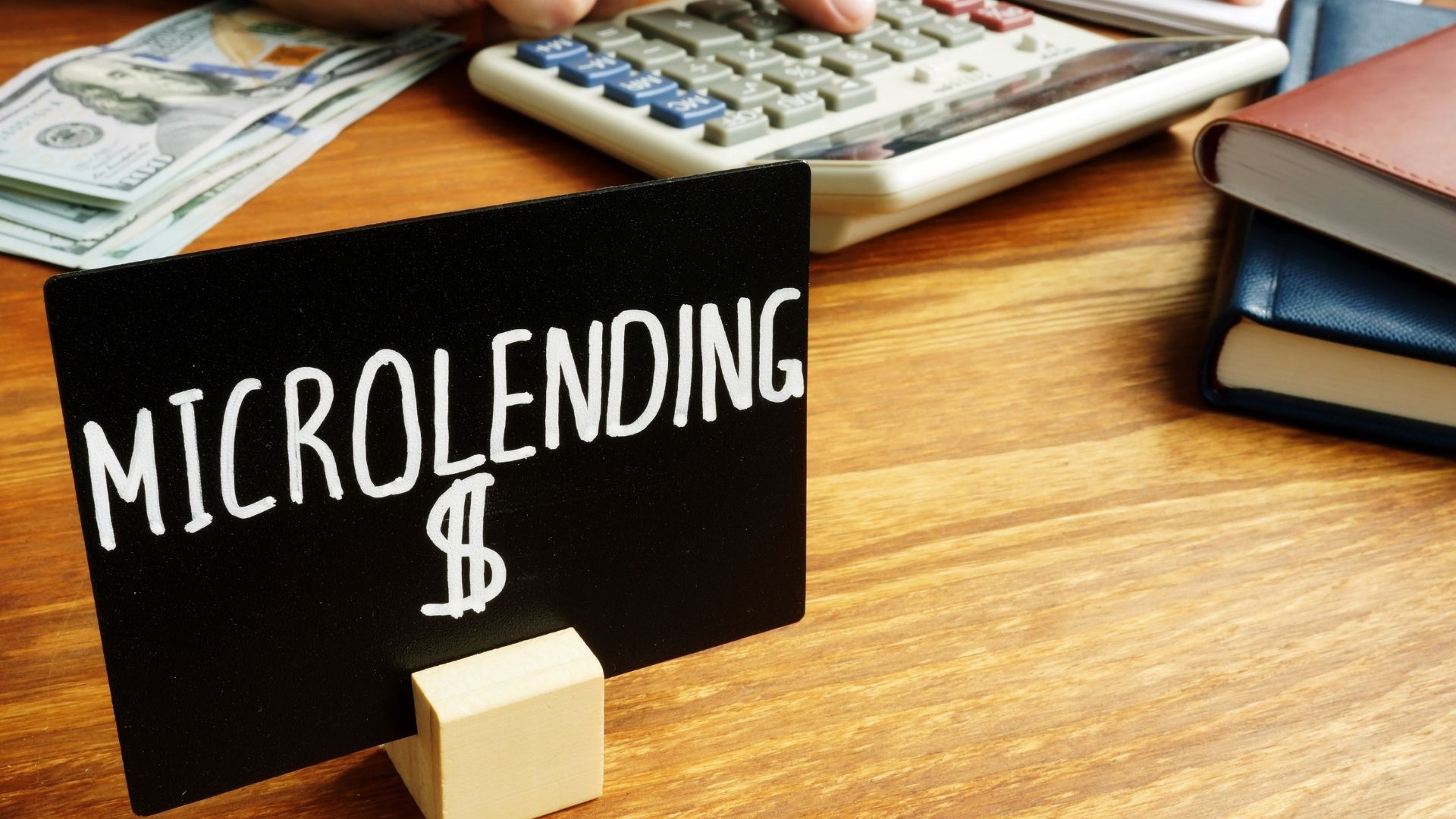Microlending is a relatively new concept, but it has the potential to revolutionize the world of finance and help those in need. This type of lending allows individuals and organizations to lend small amounts of money to people who would otherwise not be able to access traditional banking services.
But what are the risks and rewards associated with microlending? In this article, we will explore these questions and provide an overview of how microlending works, its benefits, and some of the drawbacks that come along with it.
The idea behind microlending is simple: by allowing lenders to make small loans at low-interest rates, they can provide capital to borrowers who may not qualify for conventional bank loans or other forms of credit.
These types of loans have helped millions of people around the world access much-needed funds for business development, education expenses, medical treatments, housing repairs, and more. However, there are also several risks associated with this form of lending that must be taken into account before entering into an agreement with a lender or borrower.
Finally, when deciding whether or not microlending is right for you or your organization, it’s important to understand both the risks and rewards associated with this practice. By understanding these factors ahead of time, you can make a more informed decision about whether or not this type of financing is appropriate for your situation. Read on to learn more about microlending and prepare yourself for making decisions related to this revolutionary way of providing financial assistance!
Definition Of Microlending

Microlending is a type of financing that provides small loans to individuals or businesses in need. It’s typically used by entrepreneurs and low-income borrowers who don’t meet the requirements for traditional banking, making it one of the few lending options available to them. Microloans are usually smaller than traditional loans, ranging from $500 to $50,000, depending on need and location.
The benefits of microlending include increased access to capital for those who might not otherwise have it, as well as stimulating economic development in underserved communities. For borrowers, these loans can be an essential tool for launching their new business or expanding operations at their existing one. For lenders, they provide opportunities to make a positive impact while still earning competitive returns on their investments.
However, there are risks associated with microlending, too; some borrowers may lack credit history or collateral required by stricter loan requirements, meaning investors run the risk of defaulting on repayment if proper due diligence isn’t done ahead of time.
Additionally, lenders must take into account macroeconomic conditions when deciding whether to invest in a particular region since local economies may experience rapid fluctuations that could leave loans unpaid. All this said, understanding these potential pitfalls before investing will help protect both borrower and lender alike—allowing everyone involved to reap the rewards associated with successful microlending initiatives.
3 Benefits Of Microlending

Microlending has the potential to bring a wealth of benefits to both lenders and borrowers alike. From increased access to capital for entrepreneurs to stimulating economic development in low-income areas, there are plenty of advantages associated with this type of financing. Here are some key reasons why microlending is such an attractive option:
1. Increased Access To Capital
Microloans provide businesses and individuals who may not have access to traditional banking options the opportunity to secure needed funds. This can be especially beneficial for those living in rural or underdeveloped communities where resources tend to be more limited.
2. Stimulated Economic Development
By investing in local businesses, microlenders help stimulate economic growth at the community level—which can ultimately create jobs and improve the quality of life for all residents. Additionally, these projects often promote self-sufficiency among borrowers, as they’re able to repay their loans without relying on outside aid.
3. Competitive Returns For Lenders
Investors who choose to participate in this form of lending also benefit from competitive returns on their investments. While it’s always wise to proceed with caution when selecting borrowers, if done carefully, investors can enjoy positive financial gains while making a difference in their local community at the same time.
All things considered, microlending offers tremendous opportunities for both lenders and borrowers looking for ways to grow and support themselves financially. With proper due diligence and risk management strategies, everyone involved stands to benefit significantly from participating in this worthwhile venture.
3 Potential Downsides Of Microlending

Despite the numerous benefits associated with microlending, there are also potential downsides to consider. As with any type of financing, if not done properly, it can lead to significant losses and other negative consequences for both lenders and borrowers alike. Here’s a closer look at some of the risks involved:
1. Default Risk
Unfortunately, borrowers may default on their loans due to a lack of income or unexpected expenses. This poses a significant risk for investors who’ve provided capital, as they would be unable to recoup any losses incurred in such cases. Additionally, this could negatively affect the borrower’s credit score, which could make it more difficult for them to secure future funding.
2. Challenges With Repayment Structures
Since most microloans require repayment within short time frames (often one year), borrowers may struggle to pay back what is owed. If installments become unmanageable over time, this could cause further financial hardship for those involved—especially since interest rates tend to be higher than traditional forms of financing.
3. Regulatory Issues
Microlenders must stay abreast of all regulations imposed by local governments and international organizations in order to remain compliant. Failure to do so can result in costly fines or even criminal charges depending on the severity of the violation—which could put both lenders and borrowers in an unfavorable position going forward.
In light of these concerns, careful consideration should always be given prior to engaging in any form of microlending activity. By taking steps to mitigate risk and ensuring that all parties understand the terms laid out in loan agreements beforehand, everyone stands a better chance of enjoying successful outcomes down the line.
3 Alternatives To Microlending

For individuals and organizations who are seeking alternative financing options, there are a number of other viable solutions to consider. From grants and crowdfunding platforms to small business loans and venture capital investments, these tools can provide much-needed resources without the same level of risk associated with microlending. Here’s a look at some potential alternatives:
1. Grants
For those looking for funding with no strings attached, grant programs may be worth exploring. Governments, universities, and nonprofits typically offer grants to help fund projects or initiatives that benefit the public in some way—which could be an ideal solution depending on one’s needs.
2. Crowdfunding Platforms
If you’re trying to raise money quickly from a large group of people, crowdsourcing is another viable option. Sites like Kickstarter allow entrepreneurs to solicit contributions from backers in exchange for rewards or equity stakes in their businesses—allowing them to secure capital without taking out traditional loans.
3. Small Business Loans
Depending upon your credit history and need for funds, obtaining a loan from a bank or financial institution might also be an appropriate course of action. These types of loans tend to come with fewer restrictions than microloans, as well as more favorable interest rates over time—making them attractive options for many borrowers.
No matter what path you choose when it comes to financing your endeavors, it’s important to weigh all available options carefully before making any decisions. Doing so will ensure that you have access to the funds needed while minimizing risk along the way.
Frequently Asked Questions

What Is The Riskiest Type Of Microlending?
When talking about microlending, the riskiest type of loan to consider is one that involves a borrower with little or no credit history. This type of loan often comes with higher interest rates and fees, making it more difficult for borrowers to repay their loans on time. There can also be other risks associated with these types of loans, such as potential fraud from unscrupulous lenders and increased competition from larger financial institutions.
However, there are still rewards associated with this form of financing. Small-scale entrepreneurs who lack access to traditional forms of capital may benefit greatly from receiving microloans. Additionally, microlenders typically have less stringent requirements when it comes to loan approval and repayment than large banks do, which makes them an attractive option for those who cannot secure funding through other means.
The key for any lender looking at offering microloans is to ensure that they thoroughly assess the risk involved in each transaction before approving a loan. That way, both the lender and borrower can be sure that they will receive fair terms throughout the course of their agreement and limit the chances of defaulting on payments due to unforeseen circumstances.
How Does Microlending Benefit Borrowers?
Microlending is a form of financing that can be beneficial for both borrowers and lenders. By providing small quick cash advance loans to people who may not otherwise have access to traditional banking services, microlenders are helping bridge the gap between those with financial resources and those without. But what does it mean for the borrower? How does microlending benefit them?
One way in which microlending helps borrowers is by giving them more opportunities to achieve their goals. With access to capital, entrepreneurs can invest in business projects or pursue higher education. For individuals struggling with poverty, taking out a loan gives them the ability to purchase essential items they couldn’t afford before – such as medical treatments or home repairs. In these ways, microloans provide much-needed economic empowerment to vulnerable populations.
In addition to increased opportunity, microlenders often offer technical assistance and mentorship programs along with their loans. This enables borrowers to develop important skills related to budgeting and record keeping, making them better equipped for long-term success. Furthermore, many organizations now rely on digital platforms that track payments and help ensure transparency throughout the lending process – ultimately leading to improved trust from both sides of the transaction.
For all of these reasons, there are numerous advantages associated with microlending for borrowers – from gaining greater access to resources and learning new skill sets to becoming financially stable over time through regular repayment plans.
What Are The Qualifications For Becoming A Microlender?

Becoming a microlender is an important responsibility that requires certain qualifications. It’s an effective way to help others who may not have access to traditional sources of financing and could be rewarding for those willing to take the time to understand what it entails.
Here are three key qualifications necessary for becoming a microlender:
First, would-be lenders need to demonstrate financial stability. Lenders must prove they’re able to cover any potential losses incurred by borrowers defaulting on their loans, so having sufficient assets or good credit is essential in order to qualify as a lender.
Second, successful applicants should possess excellent interpersonal skills. Microlending involves dealing with people from all walks of life, and being able to effectively communicate with them is critical; this includes knowing when and how much money can be lent out responsibly in different situations.
Thirdly, experience in finance and/or customer service is highly valued by many microlending programs. Having knowledge of banking regulations along with problem-solving skills that enable quick responses are both desirable qualities among prospective lenders.
In summary, individuals interested in becoming microlenders should ensure they meet these requirements before taking part in such efforts. Knowing the ins and outs of microlending will allow one to make sure their funds go towards helping those truly in need while minimizing risks associated with lending capital.
How Does Microlending Affect The Local Economy?
How does microlending affect the local economy? This is an important question for anyone considering becoming a microlender. Microlending, which involves giving individuals and small businesses access to capital from lenders who provide smaller loans than traditional banks, can improve economic outcomes in developing communities. Here are four ways that it can have an impact!
Firstly, microloans can help boost entrepreneurship by providing start-up funds to people lacking access to traditional banking institutions. By enabling entrepreneurs with limited resources to enter new markets or expand their existing operations, this type of lending allows them to create jobs and spur economic growth in their areas.
Secondly, as more borrowers become able to pay back their loans on time, this helps build trust between microfinance organizations and traditional financial institutions – making these types of investments more attractive overall. In addition, when borrowers default less often due to having better access to credit, they reduce risk and increase loan amounts available at lower interest rates – leading to greater investment opportunities for everyone involved.
Thirdly, the availability of affordable capital through microlenders makes it possible for those living in poverty-stricken regions to achieve upward mobility, thus improving their quality of life while encouraging others around them to do the same.
Finally, if done right, microlending can be an effective tool for community development projects such as education initiatives or infrastructure improvements – increasing the region’s potential for long-term economic growth.
Microlending has the power to positively transform lives and economies alike; it just takes some effort and research upfront in order to ensure success.
What Types Of Loans Are Available Through Microlending?

Microlending is a form of lending that seeks to provide small loans to individuals, businesses, and entrepreneurs who may not have access to traditional banking services. There are various types of microloans available depending on the borrower’s needs.
For example, short-term working capital loans are typically used for inventory or equipment purchases; meanwhile, long-term investment loans can be used to finance projects such as home construction or business expansion. Microfinance institutions also offer special-purpose loans designed for specific purposes like agricultural investments or launching new products.
In addition to these loan options, some microlenders also provide credit lines for ongoing capital needs. These open lines of credit allow borrowers to draw from them up to a certain limit and make repayments over time with interest rates determined by the lender based on the borrower’s financial situation. This type of loan is beneficial because it gives businesses more flexibility in terms of their cash flow without having to take out large amounts upfront.
Finally, there are other unique solutions that some microfinance providers are offering, such as peer-to-peer lending programs which connect lenders directly with borrowers via online platforms. Such initiatives help reduce costs associated with intermediaries while providing lower borrowing costs due to increased competition among lenders. It has become an increasingly popular way for people around the world to access financing at competitive rates, even if they don’t have access to traditional banking resources.
Conclusion
In conclusion, microlending has the potential to be a powerful tool for economic development and poverty alleviation. It can offer access to capital that would otherwise not be available to small businesses or individuals, giving them the opportunity to improve their livelihoods.
Despite this benefit, there are risks associated with engaging in microlending activities that must be taken into account before investing funds. Researching the qualifications of borrowers, understanding the different types of loans available, and assessing the local economy are essential steps towards making informed decisions about investments.
Ultimately, taking these precautions can help investors reap the rewards of successful microlending projects while minimizing risk-related losses..









